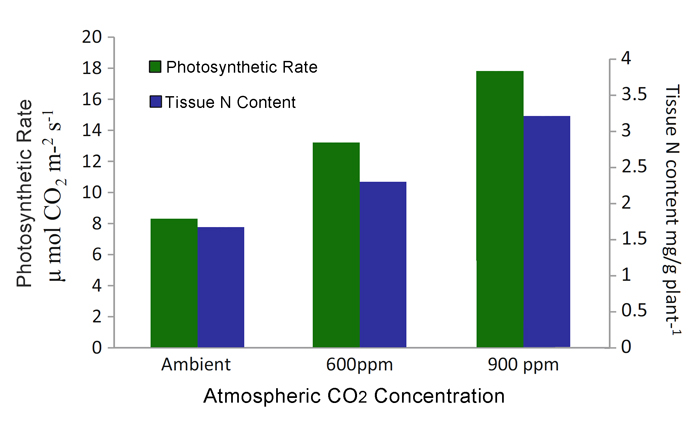| Follow @co2science |
Paper Reviewed
Karthikeyan, A. 2017. Impact of elevated CO2 in Casuarina equisetifolia rooted stem cuttings inoculated with Frankia. Symbiosis 72: 89-94.
The Australian pine tree (Casuarina equisetifolia) is a fast-growing evergreen tree species. Within four years it can reach heights of up to 50 m with a 50 cm girth. It is also of importance to the Indian economy, where annual production of pulp wood from C. equisetifolia is over 10 million tonnes. However, there have been no reported studies examining the impact of elevated CO2 on this important tree species, until now.
For a period of one year, Karthikeyan (2017) grew stem cuttings of C. equisetifolia that were inoculated with Frankia (a nitrogen-fixing microbial symbiont) in open-top chambers under ambient (380 ppm) or elevated (600 and 900 ppm; daytime enrichment only) levels of atmospheric carbon dioxide. At the end of the experiment, the rooted stem cuttings were harvested and several growth characteristics were examined. So what did the experiment reveal?
As described by the author, "elevated CO2 greatly influenced the growth, biomass, nutrient content and photosynthesis in C. equisetifolia inoculated with Frankia." Indeed, as compared to ambient conditions, elevated CO2 boosted the photosynthetic rate by 59% and 115% (see figure below), shoot length by 53% and 124%, root length by 23% and 49%, collar diameter by 16% and 47%, the number of plant nodules by 91% and 274%, shoot biomass by 72% and 165%, root biomass by 45% and 100% and tissue nitrogen content by 35% and 88% (see figure below) in the 600 and 900 ppm treatments, respectively.
In light of the above findings, it would appear that the future looks bright for the Australian pine tree agroforesty industry, which will reap several growth-enhancing benefits of rising atmospheric carbon dioxide. Yet the benefits will not be limited to the production of pulp wood, as Karthikeyan notes that C. equiseitifolia is "also used as fuel wood, poles for services like shelterbelts, windbreaks, rehabilitating mine spoils and nutrient poor areas."

Figure 1. Photosynthetic rates and tissue nitrogen (N) content of C. equisetifolia rooted stem cuttings inoculated with Frankia under elevated CO2 conditions. Source: Karthikeyan (2017).




